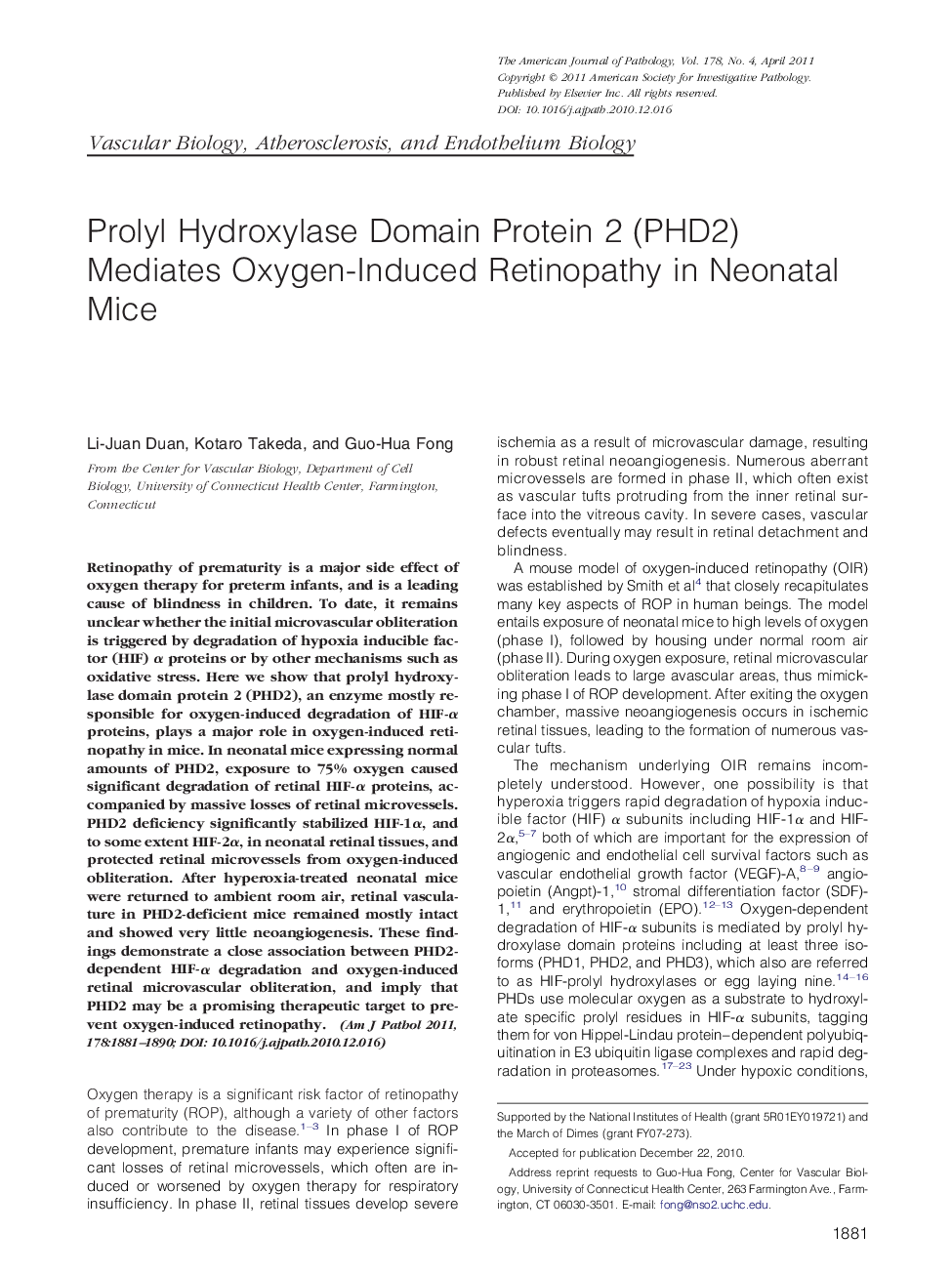| Article ID | Journal | Published Year | Pages | File Type |
|---|---|---|---|---|
| 5936101 | The American Journal of Pathology | 2011 | 10 Pages |
Retinopathy of prematurity is a major side effect of oxygen therapy for preterm infants, and is a leading cause of blindness in children. To date, it remains unclear whether the initial microvascular obliteration is triggered by degradation of hypoxia inducible factor (HIF) α proteins or by other mechanisms such as oxidative stress. Here we show that prolyl hydroxylase domain protein 2 (PHD2), an enzyme mostly responsible for oxygen-induced degradation of HIF-α proteins, plays a major role in oxygen-induced retinopathy in mice. In neonatal mice expressing normal amounts of PHD2, exposure to 75% oxygen caused significant degradation of retinal HIF-α proteins, accompanied by massive losses of retinal microvessels. PHD2 deficiency significantly stabilized HIF-1α, and to some extent HIF-2α, in neonatal retinal tissues, and protected retinal microvessels from oxygen-induced obliteration. After hyperoxia-treated neonatal mice were returned to ambient room air, retinal vasculature in PHD2-deficient mice remained mostly intact and showed very little neoangiogenesis. These findings demonstrate a close association between PHD2-dependent HIF-α degradation and oxygen-induced retinal microvascular obliteration, and imply that PHD2 may be a promising therapeutic target to prevent oxygen-induced retinopathy.
